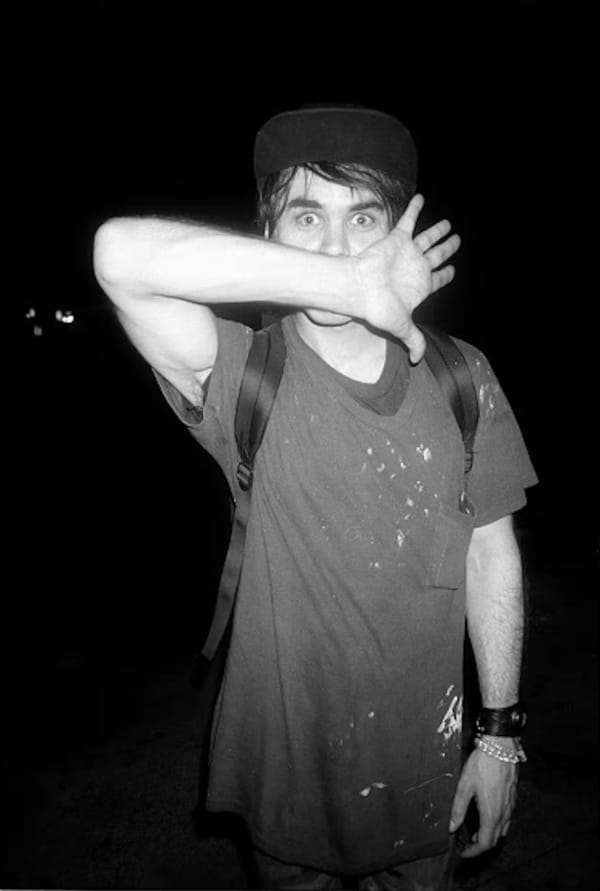Was there an American fashion designer more precocious than Stephen Sprouse ? He once shared with Interview magazine that he learned sketching by reading Vogue at the age of 8 and began designing clothes just a year later. At 12, his father took him to New York to meet Bill Blass, whom he sketched for at 14, before briefly attending Rhode Island School of Design at the age of 18. He then left to work for Halston.
Sprouse's legacy lies in his ability to bridge the gap between New York's uptown sophistication and the downtown punk and pop scene - an amalgamation of tastes and styles that are now commonplace. In May 1984, Sprouse made a significant impact at the Ritz Club in the Lower East Side, bringing fashion editors below 14th Street for one of his most memorable shows. His "punk couture" presentations were characterized by Day-Glo colors, Velcro, and futuristic fabrics, always showcasing an unwavering attention to craftsmanship and detail.
The fashion industry lauded Sprouse's vibrant, high-energy collections. Bergdorf Goodman and Henri Bendel picked up his initial collection in 1983. Sprouse was honored with the CFDA award for Best New Designer in 1984. He continued making a name for himself in the vibrant downtown NYC art and fashion scenes of the late 1970s and 80s. Sprouse gained attention for his bold and unconventional designs, which often incorporated elements of punk rock and street culture.
Perhaps most notably, Sprouse designed a Day-Glo collection in 1984 featuring vibrant colors and a before unheard use of fluorescent materials. This collection not only captured the energy and spirit of 1980s New York City nightlife and cemented Sprouse’s reputation as a visionary designer but attracted the attention of Andy Warhol. So much so that Warhol created a portrait of Stephen Sprouse in a bright punk rock pink color, shining light as much on the designer's love of Day-Glo colors as on his own. Warhol was known to create unique versions of works that were not meant for normal commercial consumption and this one such example echoes the unapologetic contrast of high and low that Sprouse was known for.
Stephen Sprouse’s influence extended beyond his own clothing line. He was known for pushing the boundaries and challenging traditional fashion norms. His work often blurred the lines between high fashion, street wear and art inspiring future generations of designers to think outside the box. Into the 1990s and early 2000s, Stephen Sprouse continued to create bold and memorable collections, collaborating with brands like Louis Vuitton on limited edition collections featuring his signature graffiti-inspired designs. Tragically, Sprouse passed away on March 4, 2004 leaving behind a legacy of creativity and innovation. His contribution to fashion and art has been honored in exhibitions at the Costume Institute at the Metropolitan Museum of Art in New York City.
Discover signed Warhol prints for sale and contact info@guyhepner.com for latest availabilities. Looking to sell? speak to our team on how to sell andy warhol prints.


